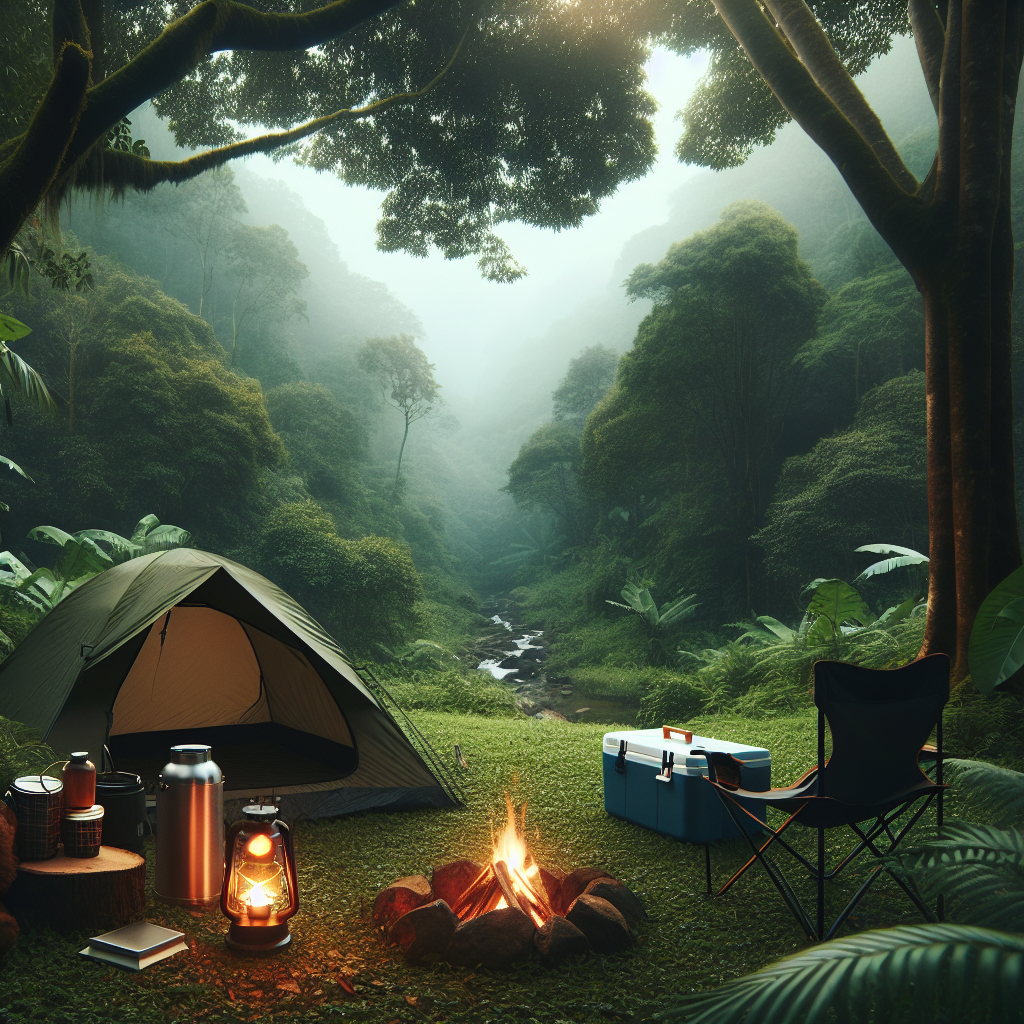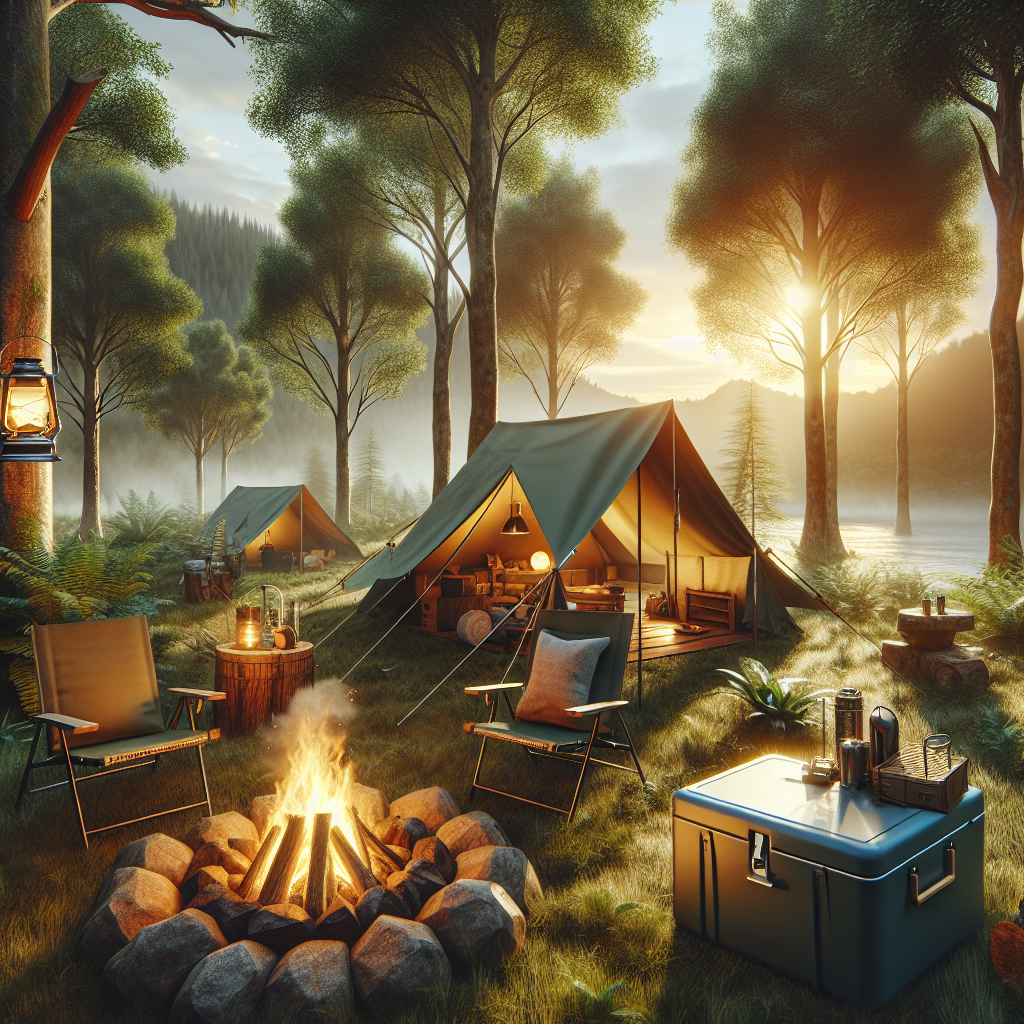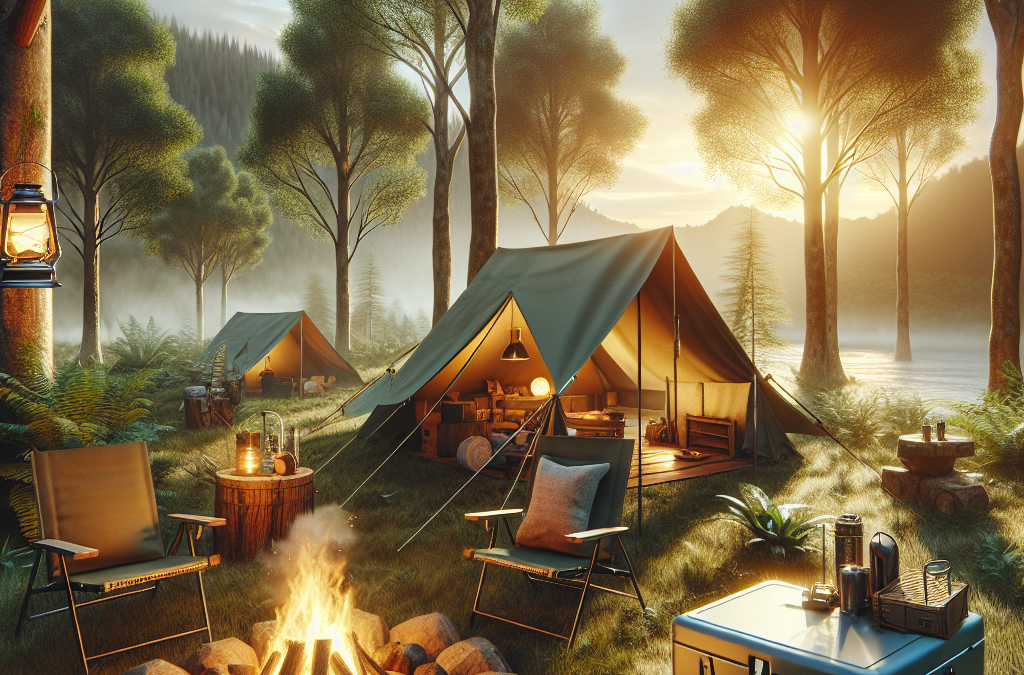Embarking on your first camping adventure and not sure where to start? TrailTrekTribe, your trusted portal for all things outdoors, is here to help! By sharing the passion and wisdom of its founder, seasoned adventurer Noah Parker, along with practical, real-life tips from its vibrant community of outdoor enthusiasts, this article will guide you on how to set up a campsite for the first time. Learn not just the basic setup, but also responsible and sustainable practices that will make your experience worthwhile. With TrailTrekTribe as your guide, every outdoor adventure, whether you’re a veteran or a newbie, can be an exciting and enjoyable journey. So let’s get your gear ready and venture toward your first thrilling camping experience with confidence and ease!

Selecting the Perfect Campsite
When it comes to camping, the first and foremost thing you need to do is select the right campsite. Your camping experience largely depends on your chosen site.
Research Location
Start by researching. Look for a location that matches your camping style and interests. Check out various camping sites on the internet, read reviews, and ask for recommendations from fellow campers if possible. Make a list of interesting places and then choose one that you’d like to explore.
Understand Park Rules
Every campsite or park has its own specific set of rules. It’s crucial to familiarize yourself with these rules. Some parks may have restrictions on campfires or collection of firewood from the park. Some parks may also have limitations on the number of people allowed in a campsite. A clear understanding of these rules ensures a conflict-free camping experience.
Assess the Terrain
Once you’ve arrived at your desired camping location, take a good look at the terrain. Inspect for any potential dangers, such as dead trees, steep slopes, and insect nests. Your chosen terrain should be relatively flat for a comfortable sleeping setup. If you can, always aim for a site near a water source for convenience but far enough away to avoid attracting wildlife.
Packing Camp Gear
A successful camping trip requires careful planning when it comes to packing. You should ensure you have all the essentials needed to make your camping experience fun, safe, and comfortable.
Essential Camping Equipment
Your essential camping equipment should include a tent, sleeping bag, a camping stove or grill for cooking, camping chairs, first aid kit, flashlight, and a multi-tool. If you’re camping in a location known for wildlife, consider bringing bear spray and make sure your food storage is bear-resistant. A map and compass are also handy for navigation between sites.
Choosing the Right Tent
Selecting the right tent can make all the difference to your camping experience. Look for a tent that’s easy to set up, durable and waterproof, with enough room for yourself and your camping gear. Tent types differ for different camping scenarios, hence consider your camping location and weather conditions while choosing your tent.
Cooking and Eating Essentials
Pack cooking utensils and eating gear such as campfire grill, pots, pans, plates, cups, and silverware. Don’t forget essentials like water purification tablets or a water filter for safe drinking water. Pack food items that require minimal preparation or cook beforehand for easy meals.
Emergency Kits
An emergency kit is a must-have on any camping trip. It should include bandages, antiseptic wipes, painkillers, insect repellent, a whistle, and any necessary personal medication. Remember, it’s always better to be prepared for any unexpected incidents.
Setting Up Your Tent
Setting up the tent is one of the major tasks while camping. Here’s a step to step guide to make it easy for you.
Marking the Tent Location
Start by marking your desired tent spot. Avoid setting up your tent under dead trees or limbs. Remember to leave sufficient space for your cooking area, and keep your tent uphill from that to avoid rain runoff.
Clearing the Tent Spot
You’ll want your sleeping area to be comfortable, so clear your tent site of rocks, sticks, and debris. Pay attention to the ground surface; it needs to be relatively flat and dry.
Laying the Ground Sheet
Place a groundsheet or tarp down before you pitch your tent to protect the tent floor from moisture, sharp objects, and dirt. Make sure all corners of the groundsheet or tarp are tucked under the tent to avoid rainwater running under your tent.
Deciphering Tent Instructions
Now comes the most technical part. Make sure to follow the tent instructions carefully. Typically, you’ll begin by assembling the tent poles, then erecting the tent body and securing it with the provided stakes and guylines.
Staking the Tent
Ensure your tent is well-staked into the ground to withstand potential winds. Use all peg points for maximum stability and adjust all the tension straps evenly.
Making a Fire Pit
Creating a suitable fire pit is essential for cooking, keeping warm, and repelling insects.
Choosing the Right Spot
Choose a spot for your fire pit that’s a safe distance from your tent and any flammable materials. If your campsite has premade fire pits, be sure to utilise those.
Gathering Firewood
Collect dry sticks and logs for your firewood. Never cut live trees for firewood as it is typically against park regulations and damaging to the environment.
Building the Fire Pit
If there are no pre-made fire pits, you can create one by clearing a small area and encircling it with rocks. Ensure there are no overhanging branches or nearby vegetation that could catch fire.
Fire Safety Precautions
Always follow fire safety precautions, respect fire restrictions, and never leave your fire unattended. Ensure to fully extinguish your fire before going to bed.

Establishing a Cooking Area
A well-organized cooking area can make meal preparation much easier during your camping trip.
Locating a Safe Area
Choose a location for your cooking area that’s a safe distance from your tent to mitigate fire risk. The area should be downwind of the sleeping area to avoid attracting wildlife with cooking smells.
Setting Up Camp Stove
Set up your camp stove on stable, non-flammable terrain. Place food and fuel a safe distance from the stove while cooking.
Organizing Cooking Utensils and Food Supplies
Ideally, keep all your Cooking utensils and food supplies within easy reach but make sure to store them away correctly after use to avoid attracting any wildlife.
Organizing a Sleeping Area
Ensuring a comfortable and safe sleeping area is crucial for a good night’s rest while camping.
Arranging the Sleeping Supplies
Inside the tent, lay out sleeping pads, a sleeping bag for each camper, and a comfortable pillow. Your sleeping bag should be appropriate for the current weather conditions.
Comfort Considerations
For added comfort, consider bringing along an air mattress or sleeping pad for underneath your sleeping bag. It’s also a good idea to bring earplugs and an eye mask if you’re a light sleeper.
Safety Measures
Ensure that food, toiletries, and anything that may attract wildlife is stored outside and away from your sleeping area.
Setting Up Your Toilet Area
In a camping area without facilities, you might need to establish a makeshift toilet.
Choosing the Right Site
Select a site for your bathroom that’s at least 200 feet from your camp, any trails, and water sources to minimize contamination.
Digging a Cat Hole
A cat hole is a small pit dug in the ground for waste disposal. The hole should be 6-8 inches deep and about 4-6 inches in diameter. After use, the hole should be fully covered with the original soil.
Implementing Hygiene Measures
Always ensure you are practising good hygiene when camping. Bring along biodegradable toilet paper, hand sanitizer, and soap.
Keeping a Clean Campsite
A clean campsite benefits not only you but also the wildlife and other campers.
Disposing Garbage
Dispose of all garbage in bear-resistant trash cans if provided, or pack it out with you. Do not burn rubbish as this can attract wildlife.
Cleaning Cookware
Avoid leaving dirty dishes and cookware out overnight. Clean your cookware thoroughly after every use.
Minimizing Wild Animal Attraction
Securely store any food or strong-smelling items in a bear canister or in your vehicle whenever you are not using them. Never feed or approach any wild animals in your campsite.
Securing Your Campsite
For a safe camping experience, securing your campsite is a significant measure to take care of.
Monitoring the Weather
Monitor the weather conditions closely. Invest in a portable weather radio, check for online updates, or ask rangers for the most reliable info.
Keeping Wildlife Away
The best way to keep wildlife away from your campsite is by keeping it clean. Store food and other attractants out of sight and smell range of wildlife. Keeping a safe distance from wildlife is also important for your safety and their wellbeing.
Night-time Attentiveness
Keep flashlights and headlamps handy during the night-time for any necessary bathroom trips or sudden noises.
Leave No Trace Principles
Adhering to the Leave No Trace principles can help protect the environment and ensure that these natural spaces remain for generations to come.
Respecting Your Environment
Show respect for the environment and wildlife. Do not disturb the natural habitat, and keep noise to a minimum.
Sustainability Measures
Try to minimize your impact on the environment as much as possible. use reusable items, perform camp chores far from water sources, and keep campfires small to conserve firewood.
Correct Disposal of Waste
Dispose of waste properly. If there isn’t a disposal facility at the campsite, pack your waste and dispose of it properly after you leave.
Taking Everything Back Home
One of the top Leave No Trace principles is to bring every single thing back home that you brought with you, minus the consumables. Leave the camping site as you found it.
With all these pointers in mind, get ready for your camping trip. Be prepared, be safe, respect the environment, and most importantly, enjoy being out in the wilderness. At TrailTrekTribe, we remind you that the journey to the perfect camping experience begins with proper preparation. Happy camping!

